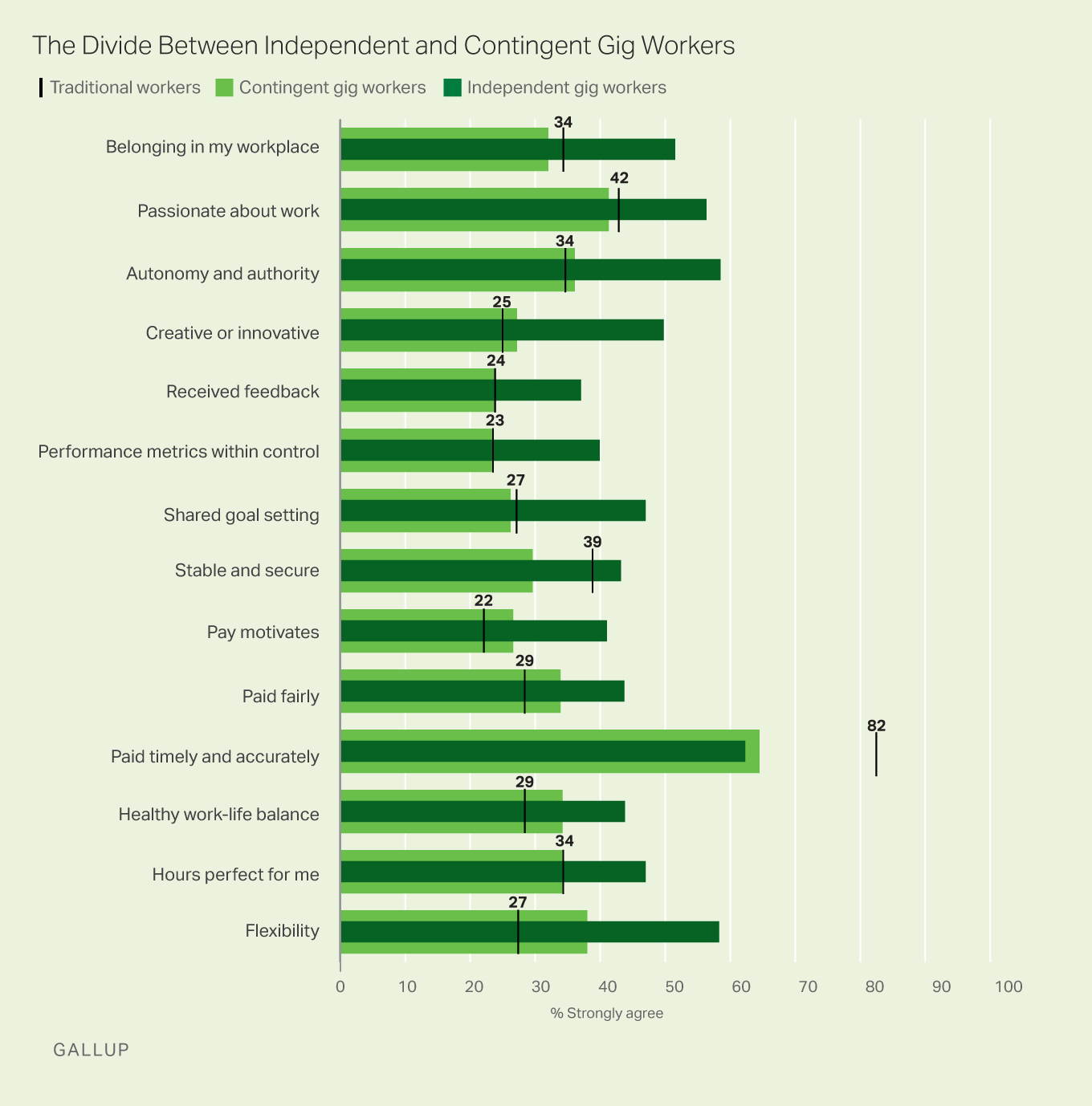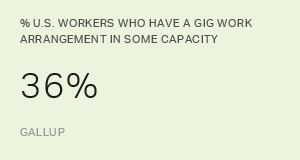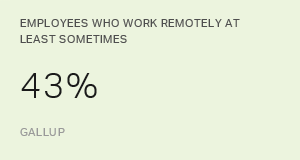Story Highlights
- Independent and contingent workers create a "tale of two gig economies"
- 64% of gig workers say they are doing their preferred type of work
- Traditional employers must adjust to reap benefits of gig work
In recent years much has been made about the rise of the gig economy, a labor market characterized by nontraditional, independent, short-term working relationships.
Supporters claim the gig economy is a trend toward worker empowerment and entrepreneurship, while critics worry it signals the deterioration of the social contract between employees and employers.
Gallup's data suggest they may both be somewhat right -- with significant implications for how employers should design the jobs of the future and today.
First, some background: Our new report The Gig Economy and Alternative Work Arrangements shows that 36% of U.S. workers participate in the gig economy through either their primary or secondary jobs.
However, this includes everyone from online platform workers (think Uber or TaskRabbit) to freelancers to contract nurses to temp workers. When you begin to consider all kinds of working relationships that qualify as "nontraditional," it's clear that alternative work arrangements have been around a long time.
So is the gig economy good or bad for workers? Well, it's complicated. 71% of traditional workers say they are doing their preferred type of work, compared with 64% of gig workers. But that still means a majority of gig workers do this type of work out of preference.
Nevertheless, a more striking division appears when we break down the numbers by the type of gig work: Some gig workers are much more satisfied with their work life than traditional workers, while others are struggling.
The Great Divide: Independent vs. Contingent Gig Workers
Gallup data show what we call "a tale of two gig economies."
Independent gig workers (such as online platform workers and independent contractors) experience high levels of work-life balance, flexibility, autonomy, meaningful feedback and creative freedom. In fact, they score much higher on all these factors compared with traditional workers and other types of gig workers.
In contrast, temporary workers and on-call workers report receiving less feedback about their performance. And only one in five says their performance metrics are within their control. In many aspects of their work -- belongingness, passion, autonomy, creativity, feedback, performance metrics and hours -- these contingent gig workers are more similar to traditional workers than they are to independent gig workers.

Essentially, independent gig workers who can truly be their own boss enjoy the often-touted benefits of gig work more frequently -- flexibility and freedom. Meanwhile, contingent gig workers experience their workplace like regular employees do, just without the benefits of a traditional job -- benefits, pay and security.
Consequences for Employers
The debate over the benefits and consequences of the gig economy is not merely a question for public policy. It has become a major trend in the field of human capital management. The gig economy provides a unique suite of challenges and opportunities for established companies that seek workforce agility and expertise in competitive marketplaces.
So what does Gallup's analysis suggest for traditional employers? Two things:
-
First, redesign traditional jobs to include many of the benefits of independent gig work. What makes gig work so rewarding? Flexibility, autonomy, respect, regular feedback and opportunities to be creative. Not surprisingly, these are some of the most important things today's job seekers are looking for.
-
Second, train managers to better relate to their temporary workforce. To get the most out of alternative workers, managers must communicate your organization's mission and values quickly and concisely. And just because workers are temporary, doesn't mean they don't have engagement needs. Employers should aim to be the first choice for a gig workforce that could easily choose to leave for a competitor.
The divide between independent and contingent gig workers points to the fundamental insight that there is much more to a job than the paycheck. Many factors go into a great job, and the best employers focus on the aspects of work that are most attractive to today's increasingly competitive and fluid labor force.
Download our perspective paper The Gig Economy and Alternative Work Arrangements to gain a deeper understanding of the gig economy and its implications for your organization.

